The NIWA Invertebrate Collection (NIC) holds specimens from almost all invertebrate phyla. This is a result of over half a century of marine taxonomic and biodiversity research in the New Zealand region, the wider South West Pacific and the Ross Sea, Antarctica.
In this blog series, we feature a new critter from our expansive invertebrate collection including pictures of specimens in their unique habitat. The blogs also feature news, links and fun facts that showcase New Zealand’s fascinating marine fauna.
-

Catch me if you can!
This week we feature a community of critters living on the Chatham Rise sea floor. -
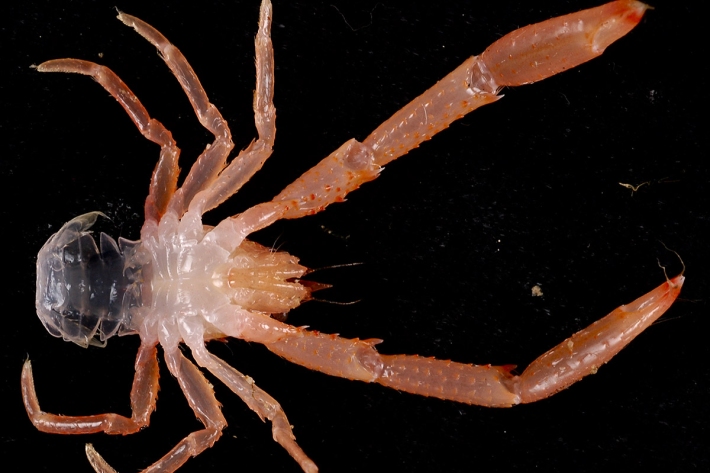
Critter of the Week: A squat lobster for a star!
Squat lobsters are known for their lengthy eyelashes and come in many different sizes from the mighty Munidopsis aries (90mm carapace length) to some species which have bodies only a few millimetres long. -
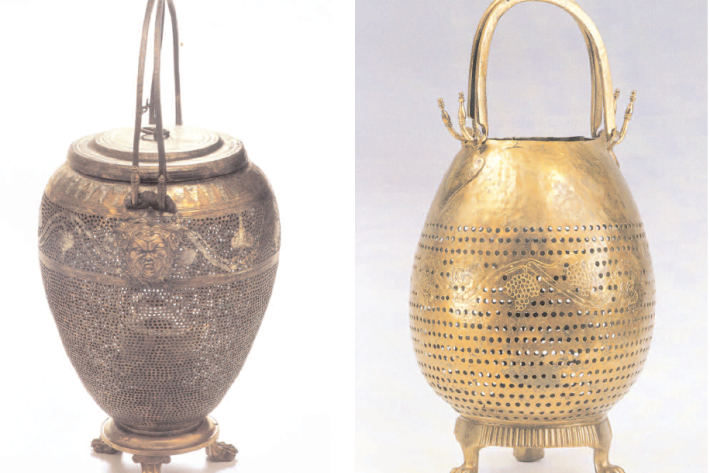
Critter of the Week – Aristotle's lantern: Celebrating the Aristotle Anniversary Year (2016)
This year is the 2400th anniversary of the birth of Aristotle, a philosopher and scientist (384 BCE), who among other many great achievements was the first person to describe the structure, ecology, and diversity of sea urchins – way back in the 4th century BC. -

Critter of the Week – Bathynomous giganteus, the giant sea slater
The giant sea slater Bathynomus giganteus A. Milne Edwards, 1879 is an abundant isopod species of massive size from the family Cirolanidae. -
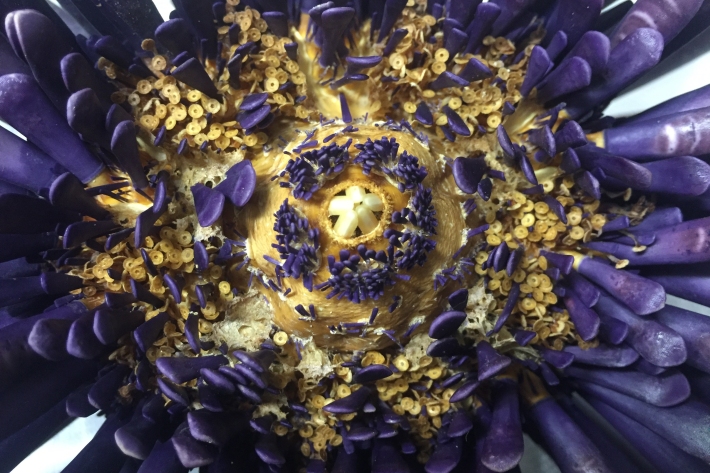
Critter of the Week: The tropical slate pencil urchin
The NIWA Invertebrate Collection mainly consists of samples collected in the deepsea, but occasionally we find shallow exceptions like this stunning sea urchin. -

Critter of the Week: The flowering seapen
Anthoptilum grandiflorum (Verrill, 1879) is a species of Pennatulacea, or sea pen, in the octocoral group of Cnidaria. Octocorals are so named because they have 8 tentacles to each of their polyps. -
Critter of the Week: The prickly king crab
The prickly king crab, Paralomis zealandica, is a member of the family Lithodidae, a mainly deepwater crustacean group that is probably better known by many people for its tasty leg meat. -
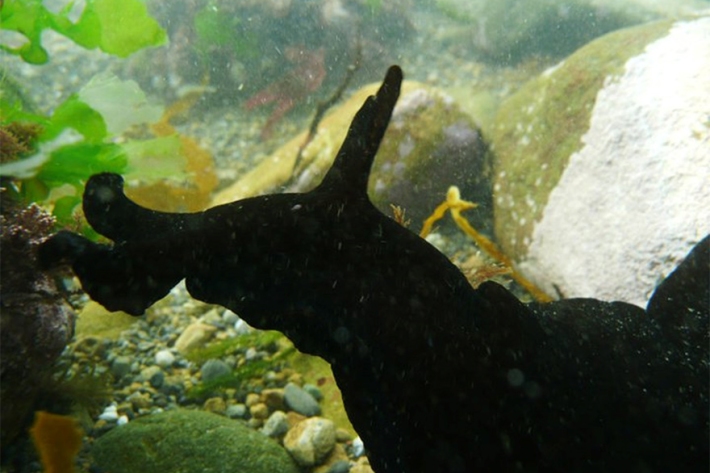
Critter of the Week: All about sea hares and their eggs
A sea hare is a type of opisthobranch or sea slug in the phylum Mollusca, with soft bodies, a reduced internal shell and two tall rhinophores coming out of their heads that resemble the ears of a hare. -
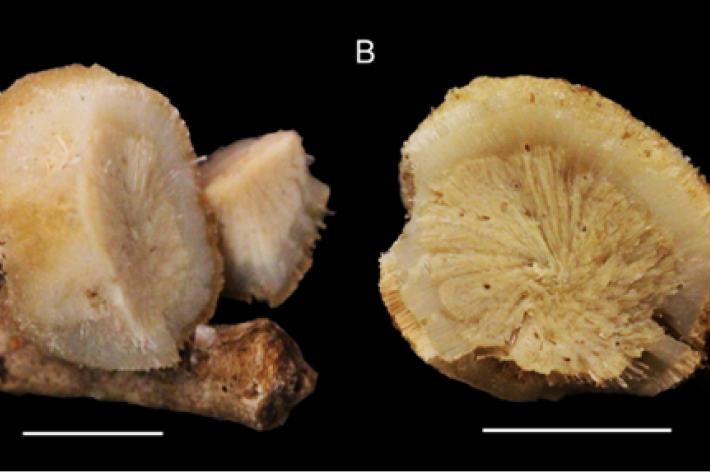
Critter of the Week: Stupenda singularis
Dr. Michelle Kelly of NIWA and Dr. Paco Cárdenas of Uppsala University, have just published a paper describing an amazing sponge which was found on a NIWA cruise to the Colville Ridge, north-east of New Zealand. -
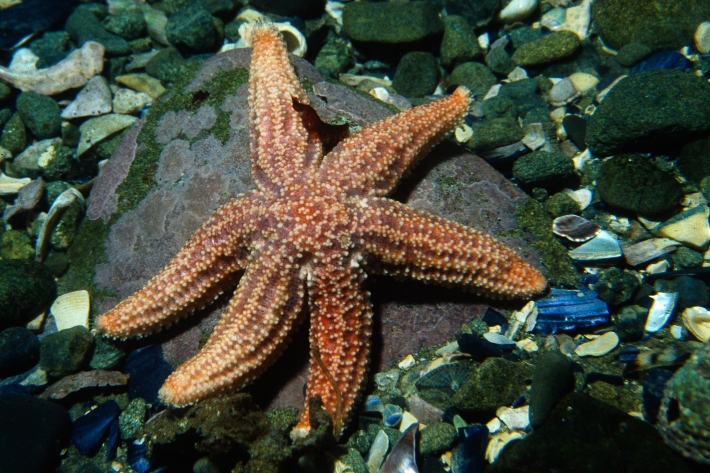
Critter of the Week: Allostichaster insignis
Like other members of the family Asteriidae, Allostichaster is fissiparous. -
Critter of the Week: The occlupanid – a member of the phylum Plasticae
As we have mentioned many times, new species can be found literally at our door step. But who has found a new species in their pantry? -

Critter of the Week: Histocidaris – The explosive urchins?
The Cidaroida is an order of very spiky and robust regular sea urchins, which can resemble something like a sputnik satellite or an underwater mine to the uninitiated. -
Critter of the Week: Geodia ewok - the ewok of the sponge universe
Geodia ewok Sim-Smith & Kelly, 2015 is an astrophorid sponge from the family Geodiidae. It was described, along with 16 other new species, in a recent publication by Sim-Smith & Kelly (2015) which increased the number of described New Zealand Geodiidae fauna from four to 22! -

Critter of the Week: Munida gregaria - The gregarious squat lobster
The gregarious squat lobster is commonly found in shallow coastal waters along the eastern coast of New Zealand’s South Island -
Critter of the Week: Solanderia – the tree hydroid
Solanderia Duchassaing & Michelin, 1846, which is commonly known as the tree hydroid or sea fan hydroid, is a genus of athecate hydrozoan. -

Critter of the Week: Brisinga chathamica
Brisingida are an order of deep-sea dwelling sea stars that look more like brittle stars with a small disk that is distinctly set off from their 13-15 arms. -

Critter of the Week: Flabellum (the dentures of the sea)
This fan-shaped beauty is large and solitary, with a widespread distribution throughout New Zealand and mainly lives on soft substrate in a broad range of depths (0 – 3200 metres). -

Critter of the Week: Corallimorphus niwa
Corallimorpharia are a group of cnidarians morphologically intermediate between sea anemones and stony corals. Like sea anemones (Actiniaria), they lack a calcareous skeleton but their internal anatomy and nematocysts are similar to stony corals (Scleractinia). In fact, phylogenetic studies have shown that Scleractinia and Corallimorpharia are closely related. -

Critter of the week: Ophiactis abyssicola
Ophiactis abyssicola (Sars, 1861) is a very common deep sea species of brittlestar distributed throughout New Zealand waters and in temperate regions in the Pacific, Indian, and Atlantic Oceans. -
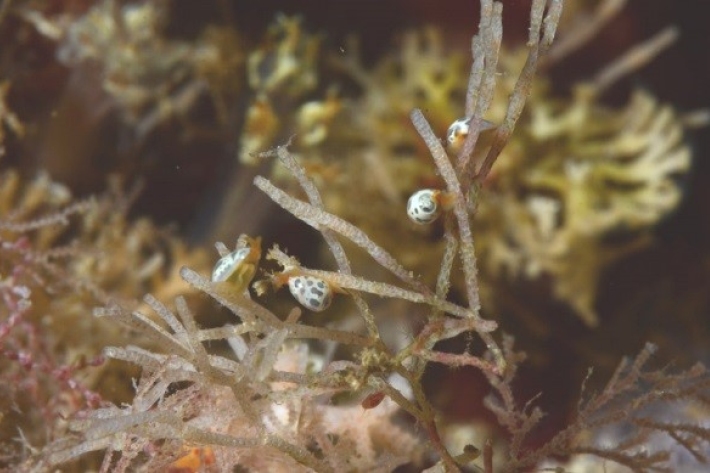
Critter of the Week: Gibberula ficula - rice snails
Gibberula ficula (Murdoch & Suter, 1906) are micro snails in the family Cystiscidae. -

Critter of the Week: Amphinome rostrata - marine bristle worm
Amphinome rostrata (Pallas, 1766), in the polychaete family Amphinomidae, can be found living amongst goose barnacles (species of Lepas) on drift objects in tropical oceans worldwide. -

Critter of the Week: Tokoprymno and Thouarella
Despite our growing understanding of the role of Antarctica in driving global climate regimes and regional patterns of marine diversity, the distribution and connectivity among deep-sea species across the Southern Ocean remain poorly known. -

Critter of the Week: Enteroctopus zealandicus – the elusive yellow octopus
The yellow octopus is large and clearly abundant, with about one million being eaten a year by sea lions in the Auckland Islands alone -
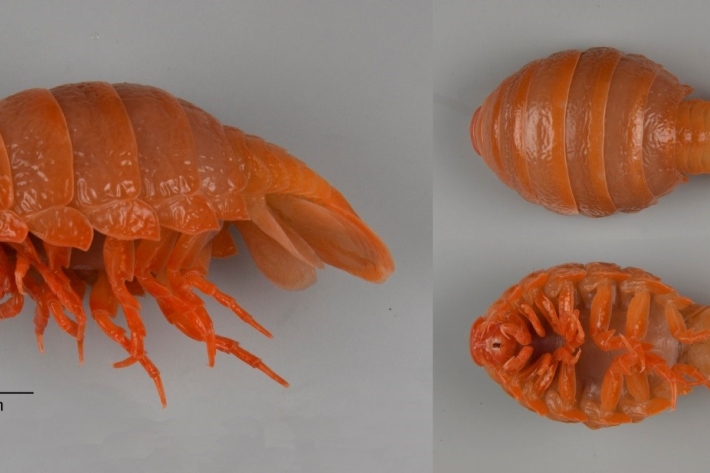
Critter of the Week: A rare find - Anuropus sp.
This rare isopod genus Anuropus, Beddard, 1886 was collected in a mesopelagic trawl from the Chatham Rise. -
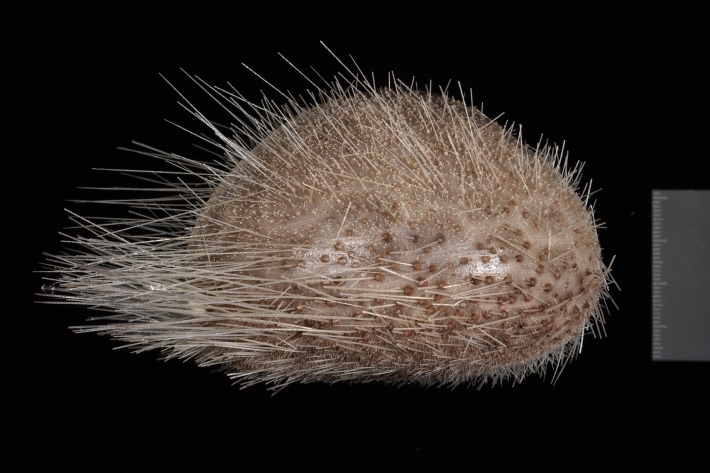
Critter of the Week: Unknown echinoid – deep-sea holasteroid
This week’s critter is an unknown species of an unusual order of sea urchins – the Holasteroida. -

Critter of the Week: More surprising finds from the Kermadecs
It was only about a year and a half ago that NIWA staff came back from a research voyage to the Kermadec Trench led by their colleagues from the Woods Hole Oceanographic Institute. -
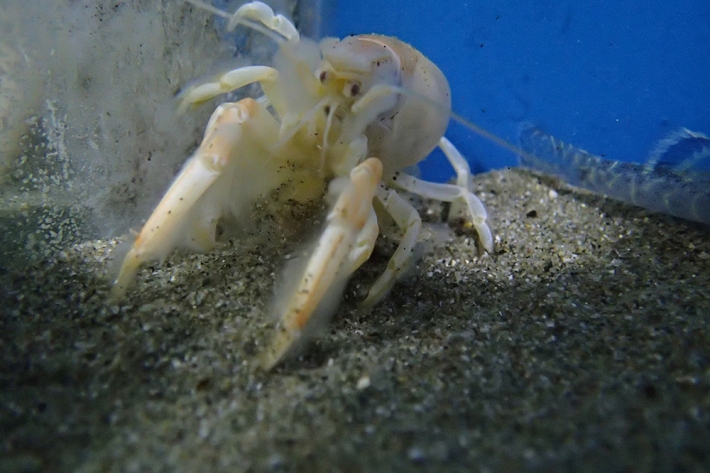
Critter of the Week: Upogebia hirtifrons - the mud shrimp
The mud shrimp species Upogebia hirtifrons (White, 1847) is a member of the large and widespread Upogebiidae family. -

Critter of the Week: Histioteuthis – the cock-eyed squid
The squid genus Histioteuthis is commonly known as the violet or cock-eyed squid. -

Critter of the Week: Iridogorgia Verrill, 1883 - the golden corals
This week’s critter is a living deep sea treasure, in a group commonly known as the golden corals. -

Critter of the Week: Coronaster reticulatus – a Kermadec seastar
On 29 September 2015 the Prime Minister of New Zealand, Rt Hon John Key, announced a new Kermadec Ocean Sanctuary stretching from Raoul Island in the north to L’Esperance Rock in the south – covering an area of 620,000 square kilometres of ocean. -

Critter of the Week: an exciting discovery, the Vesicomyidae clam
A paper has just been published this month revealing the exciting discovery of an undescribed species of clam from the family Vesicomyidae. -

Critter of the Week: Dagnaudus petterdi – the antlered crab
Although it boasts a pretty nice pair of antlers, you won’t be seeing today’s critter pulling Santa’s sled anytime soon, being a small crab that lives at great depths. -

Critter of the Week: a new species under our feet -update
This week we re-visit a recent blog featuring some new nematode worm species discovered at Hataitai beach in Wellington. -

Critter of the week: Falsimargarita gemma - the iridescent Antarctic snail
This iridescent snail from the freezing cold, deep waters of Antarctica is Falsimargarita gemma (E. A. Smith, 1915). -

Critter of the week: Hyalinoecia quill worms - Big rig truckers of the sea
In this critter "quill" is not part of a feather but rather a unique tube built by a polychaete worm that lives in it. -
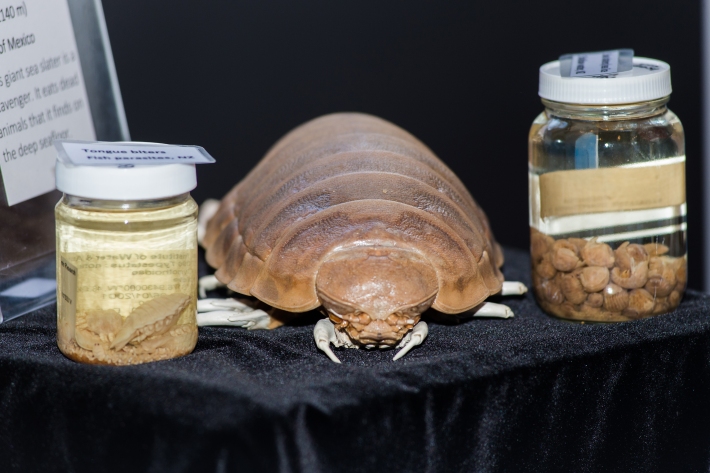
Critter of the Week – Bathynomous giganteus, the giant sea slater
The giant sea slater Bathynomus giganteus A. Milne Edwards, 1879 is an abundant isopod species of massive size from the family Cirolanidae. -

Critter of the Week – Psolus antarcticus (Philippi, 1857) the limpet-like sea cucumber
Sea cucumbers are usually, well cucumber-shaped, however there are exceptions. -

Critter of the Week: the solitary cup coral - Stephanocyathus spiniger
This stunning creature is a solitary stony cup coral species, Stephanocyathus spiniger (Marenzeller, 1888). -

Critter of the Week: Trophomera sp.: the lowest of the low
This week we introduce to you the deepest parasite ever recorded, a nematode of the genus Trophomera Rubtzov & Platonova 1974. -

Critter of the Week: new species under our feet
This week we are featuring some new species of nematode worms that have recently been found at Hataitai Beach in Wellington, just two minutes away from NIWA’s Greta Point facilities. -
Critter of the Week: Telopathes (black coral)
This week we look at Telopathes (black corals). -
Critter of the Week: Barentsia - Entoprocta – Goblet worms, or nodding animals
This week’s Critters include a large branching hydroid, to which is attached two curious, and little-known, invertebrates. -

Critter of the Week: Pleurobranchea maculata, the side-gilled seaslug
The toxic grey side-gilled seaslug. -

Critter of the week: Calliactis polypus – pumice hitchhiker
This week we look at Calliactis polypus anemone. Calliactis are commonly a symbiont living on the shells of hermit crabs, but it is known to attach to other objects, such as pumice. -

Critters of the Week: invertebrate phyla
Every animal on Earth belongs to one of about 35 groups called phyla. In biology, a phylum (plural: phyla) is a taxonomic rank below kingdom and above class -

Critter of the Week: Xenophora (Xenophora) neozelanica neozelanica - the shell collector
This week we look at a gastropod that cements other mollusc shells, small stones, dead coral or any other miscellaneous handy debris to the outside of its shell as it grows. -
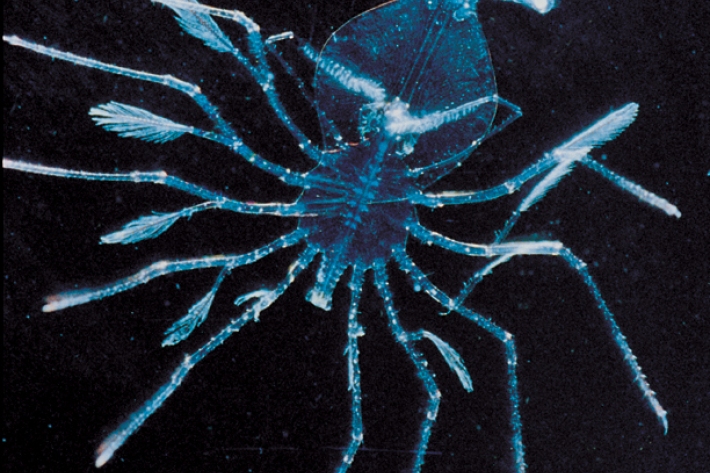
Critter of the Week: phyllosoma
This week we’re showing you something a little different. No, it’s not a member of a specific species – instead, it’s a phyllosoma. -

Critter of the Week: the spikey amphipod - Labriphimedia pulchridentata
This week it is International Museum week on Twitter so we thought we would bring you a story about an exciting find in our NIWA Invertebrate Collection archives. -
Critter of the Week: The mottled brittlestar – Ophionereis fasciata Hutton, 1872
The mottled brittle star Ophionereis fasciata, known as weki huna in Māori, lives under rocks in the low intertidal or shallow subtidal right around New Zealand. -

Critter of the Week: The colonial sea squirt Leptoclinides marmoreus Brewin, 1956
This week’s critter is the colonial ascidian, or more commonly known as seasquirt, Leptoclinides marmoreus Brewin, 1956. -

Critter of the Week: deep sea squid - Bathyteuthis abyssicola
The deepsea squid Bathyteuthis abyssicola Hoyle, 1885 has a circumpolar oceanic distribution, which means that it is commonly found right around the Southern Ocean, and in depths from 100-4200 m deep. -

Critter of the Week: the newly discovered giant Foraminifera
A new foraminiferan has been discovered in moderately deep water (110 metres) northwest of the Bay of Islands in New Zealand. -

Critter of the Week: Epimeria larsi, jewels of the deep
This hot pink gem is Epimeria larsi Lörz, 2009 described by our very own amphipod expert Anne-Nina Lörz and named after her husband Lars! -

Critter of the Week - the beautiful stalked crinoids – Isocrinidae
If you are a fan of crinoids (and who isn’t) you might enjoy this short documentary (27mins), Living Fossils, which features our friend Charles Messing from Nova Southeastern University. -

Critter of the Week: the predatory snake star, Astrotoma agassizii
Astrotoma agassizii is commonly found in the Ross Sea at the Balleny Islands, Victoria Land and Terra Nova Bay. -

Critter of the Week: the multi-coloured seastar, Asterodiscides truncatus
This week’s critter is a funky, multi-coloured seastar, Asterodiscides truncatus, commonly known as the firebrick seastar. -

Critter of the Week: Ecionemia alata (Dendy, 1924) commonly known as the purple cup
In this week’s blog we explore Ecionemia alata (Dendy, 1924) commonly known as the purple cup or pillow sponge. -

Critter of the Week: the beautiful group of marine snails - Calliostomatidae
New Zealand marine molluscs are incredibly diverse, with nearly 3,600 species described or known undescribed (Gordon, 2009). -
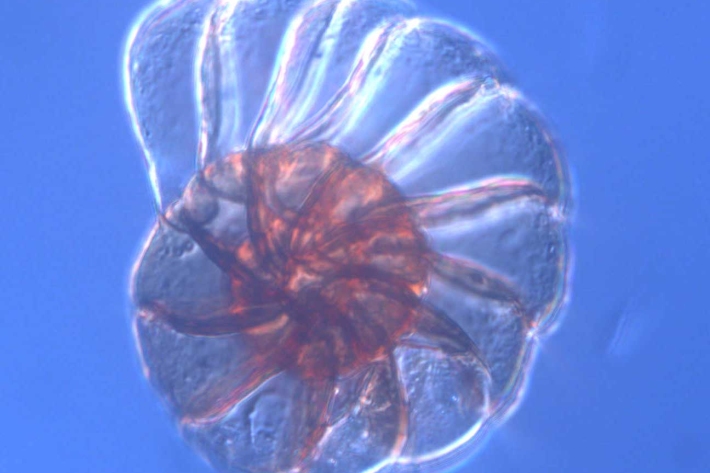
Critter of the Week: Meiofauna
When we think about marine animals, we usually think about organisms that are relatively large, such as whales, sharks, fish, squid, or sea stars. -
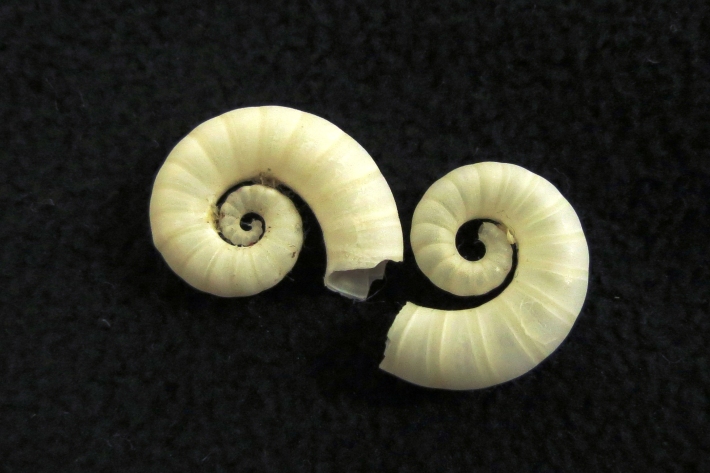
Critter of the week: Spirula spirula
The Ram’s Horn squid (Spirula spirula) is a mesopelagic species, meaning that it lives in the mid-water column. It typically lives in dark depths of 500-1000 m in the day and migrates up to the shallows of 300 m at night. -

Critter of the Week: the brightly coloured and aptly named clown nudibranch, Ceratosoma amoenum.
This week’s critter, found from the northern part of New Zealand to southern Australia, is the brightly coloured and aptly named clown nudibranch, Ceratosoma amoenum. -

This week's grumpy crab Critter is the New Zealand vent crab Gandalfus puia
We would probably be grumpy too if we didn’t have any eyes, however, in the deep sea, where there is very little light many organisms have lost the ability to see altogether. -

Critter of the Week: Macrolabrum maui – a hermit with a difference
Some of our colleagues have just published an article on a new species of tanaid from New Zealand that was found living inside tiny gastropod shells! -

Critter of the Week : the venus flower baskets Euplectellidae
An animal entirely made out of glass? We don’t have to go to an alien world for this but just have to look deep into our oceans. -

Critter of the Week: a “Brittle Star Village” on Admiralty Seamount, Antarctica
This long spiny-armed brittle star is named Ophiocamax gigas Koehler, 1900, and was collected from 700 m deep on the Admiralty Seamount, just north of the Ross Sea, Antarctica in 2008. -

This week's Critter recaps the Antarctic sea pig Protelpidia murrayi
The Antarctic ‘sea pig’ (Protelpidia murrayi) is a type of sea cucumber that can be found roaming the muddy seafloor in the Ross Sea. -

Critter of the Week: the king of the ocean, the king crab Lithodes aotearoa.
Our largest New Zealand king crab is something to behold when it comes on deck. -

Critter of the Week: the lace coral Bountyella morgani
This week’s critter will forever have a special link with NIWA CEO John Morgan. -

Critter of the Week: the ancient group of the lamp shells, or brachiopods
Brachiopods might look like a mollusc, but they are actually more closely related to bryozoans (lace corals). -

Critter of the Week: The Gorgon’s Head - Gorgonocephalus
A basket star was the first reported animal trawled up from the deep sea back in the early 1800s so they have a spot in the history books of deep ocean exploration. -

Critter of the Week: Ancient meadows of sea lilies - Ptilocrinus amezianeae
When we for the first time surveyed the Admiralty and Scott Island seamounts to the north of the Ross Sea in 2008, we encountered striking meadows of stalked crinoids at around 600 m depth. -

Critter of the Week, Caryophyllia – cup corals
This week's Critter of the Week (number 142) introduces the delicate cup coral Caryophyllia. -

Critter of the Week - The Spiny Murex - Poirieria zelandica
You might occasionally come across this long-spined beauty, the spiny murex or Poirieria zelandica, washed up at the beach, arguably one of our most impressive shells -

Critter of the Week, spiny sea slater Brucerolis brandtae
This week we thought we would go back to the beginning and revisit our very first Critter, which many of you may not have seen. Let’s take another look at the spiny sea slater Brucerolis brandtae. -

Critter of the Week - Gastroptychus rogeri
While the world’s crustacean experts gather in Frankfurt for the 8th International Crustacean Congress (including three of our own NIWA scientists), we of course have to celebrate a crustacean. -

Critter of the Week, Ocythoe tuberculata
Most octopus species live on or close to the bottom, but there are exceptions. -

The face behind the name. Critter of the Week, brittlestar Ophiomusium lymani
Continuing our series ‘the face behind the name’, this week’s critter takes a closer look at the prominent 19th century naturalist Theodore Lyman III and the species Ophiomusium lymani. -

This week's Critter is the sand-dollar associate Oxydromus sp., a hesionid polychaete.
Hesionids are lively compact small worms, often richly coloured and with a good set of eyes (2 pairs, with lenses). -

Critter of the Week. A grumpy crab Liocarcinus corrugatus
We guess we would look grumpy too if our common name was ‘wrinkled swimming crab’. -

The face behind the name. Critter of the Week, amphipod Camacho nodderi
Who doesn’t want to have a species named after them? It’s usually one of the ultimate acknowledgements and the taxonomist describing the species can honour colleagues who have made a particular contribution to a field of science or have provided support for their work. -

Critter of the Week – The fig shell, Thalassocyon tui
This week we introduce a beautiful treasure of the deep, Thalassocyon tui a sea snail generally found in northern New Zealand waters. -

Argyrometra mortenseni
This week's Critter of the Week (number 130) is the feather star Argyrometra mortenseni. -

Critter of the Week - precious coral Corallium
This week, let us celebrate the closely related genus Corallium in honour of our visiting scientist Tzu Hsuan Tu from the National Taiwan University in Taipei. -

Critter of the week - What’s for dinner? Parazoanthus and Nyctiphanes
Award-winning underwater photographer Richie Robinson spotted this little common euphausid shrimp Nyctiphanes half emerging from a polyp of the zoanthid at the Poor Knights Islands. -

Critter of the Week - the rock pen - Anthoptilum gowlettholmesae
Sea pens are generally found in deep sea soft sediment habitats (rarely are they encountered by divers). -

Critter of the Week - Asperoteuthis lui
This week we introduce to you a rare species of squid. -

A living fossil - Critter of the Week - Protulophila gestroi
If this is looking familiar, you may have read the NIWA press release or one of the many news sites that featured the exciting discovery of this living fossil. -

As far down as it goes - Critter of the Week - Scopelocheirus schellenbergi
With the Kermadec Trench Expedition coming to a close , we thought we would stay on the theme of trenches for a little longer and present to you Scopelocheirus schellenbergi. -

Critter of the Week: Grumpy crab Pilumnus novaezelandiae.
Never complain about a bad hair day again! This week’s crab arguably gives more the impression of disbelief than grump. -

Critter of the Week: Zoroaster
We hope this Week’s Critter of the Week will brighten your day, introducing the genus of sea stars called Zoroaster. -

Critter of the Week: The Mediterranean fanworm Sabella spallanzanii
The Mediterranean fanworm Sabella spallanzanii is a spectacularly large worm with a characteristic circular whirl of filaments. -

Critter of the Week - Placogorgia the plexaurid
This delicate little gorgonian coral was collected from around 1300 metres depth from the Louisville seamount chain east of New Zealand. -

Critter of the Week: The brittle star Ophioleuce brevispinum
This week we bring you a species that puts the ‘brittle’ into brittle star: the beautiful and fragile Ophioleuce brevispinum.
